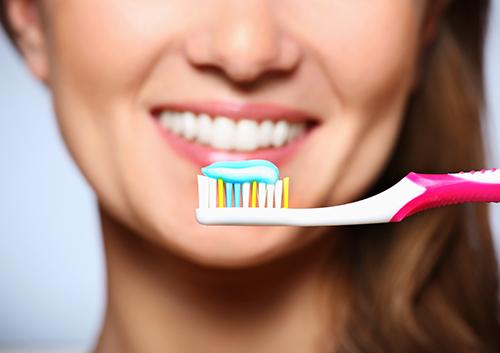 06 Feb 2023
06 Feb 2023
Let’s face it, by now, brushing our teeth is something we pretty much do on auto-pilot. A quick brush after breakfast, a minute or so at night, floss when we think of it. Done. But take a few minutes to review these cleaning tips, and see if a few small adjustments to your routine could make all the difference at your next checkup at our Woodbury, New York office.
As you may already know, your body becomes more susceptible to bacterial complications. In terms of oral health, you may be at a higher risk for gingivitis and periodontal disease during the course of your pregnancy.
The hormonal changes in your body can create a more welcoming environment for gum infections, including gingivitis. Although you may continue to brush and floss on a regular basis, and maintain your schedule of cleaning appointments, you are still prone to an increased risk of gingivitis. Your gums may feel more sensitive and become more prone to bleeding because of the increased amount of blood flowing through your body. This can also be a side effect of periodontal disease, which nearly 40% of pregnant women have.
In order to avoid painful dental visits, you should attempt to brush more than twice a day and always floss regularly. We recommend investing in a good mouthwash for extra protection against plaque buildup. Other oral conditions to watch out for during pregnancy include oral gingival lesions, tooth mobility, tooth erosion, and dental caries.
Keeping your oral health in top shape will prevent bacteria from circulating to other places in your body during pregnancy. Your immune system is more likely to be compromised, which means you generally face an increased risk for illnesses.
Don’t forget that you share nutrients and pathogens with your baby, so it’s crucial to reduce your risks in every possible way. If you think you may be experiencing an oral health issue during your pregnancy, please call our Woodbury, New York office to schedule an appointment, and we will be happy to help you.
- Tools
Some of us prefer brushing with a manual brush. Some like the electric brush for ease and comfort. Whichever form of brush you choose, be sure that it fits comfortably in your mouth, reaches everywhere it needs to, and has a handle that is easy to grip. There are many bristle options available, so if you are an energetic brusher, or if you have sensitive gums, try a soft bristled brush for gentler brushing.
If you haven’t been exploring the floss aisle lately, there are now many varieties available to suit your particular needs. Besides the traditional floss, there are coated flosses for easy gliding between teeth that fit closely together, dental tape-style flosses to fit teeth with wider spacing, and even flosses designed just for braces that thread between the wires and brackets. Talk to the doctor at your next cleaning for product suggestions if you think there’s an easier, more comfortable option out there for you.
- Technique
With proper technique, any toothbrush and floss you choose will do a fine job of removing plaque.
Brushing? There’s a tried and true method for success. Place the toothbrush at a 45° angle at the gum line. Be sure to brush the outside, inside, and chewing surface of each tooth thoroughly. Remember the expression, “Massage, don’t scrub.” Over-vigorous brushing can actually irritate gum tissue and damage enamel. An electric toothbrush should provide a continuous brushing motion without needing any pressure from the brusher. This might be the model for you if you have a too-vigorous approach to brushing, or sensitive teeth and gums. If you like your manual brush, again, give a soft-bristled brush a try!
As for flossing? That harmless-looking little string can cause gum damage if used too forcefully. You can accomplish the placement and cleaning power you need by easing the floss down to the gumline and flossing with gentle pressure against the tooth surface. If you have any questions about technique, remember—we are always happy to let you know the best cleaning methods for your specific needs.
- Timing
Of course, the best tools and the best technique in the world won’t be effective unless you put the right amount of time into brushing and flossing.
The standard rule is two minutes of brushing in the morning and two minutes at night. If you wear braces or have other special circumstances, we might recommend brushing after every meal. And if you brush after breakfast, give your teeth half an hour or so to remineralize. This natural process uses the calcium and phosphate ions in your saliva to strengthen tooth enamel after it’s been exposed to any acidic foods in your breakfast.
Thorough flossing can be accomplished in a few minutes, and might be needed only once a day. But again, depending on your individual needs, we might have other recommendations. Let’s review what works for you at your next visit—we can tailor suggestions for a brushing routine to your unique needs.
It’s a great idea to review your brushing habits periodically to make sure you are getting the most out of those minutes you spend cleaning your teeth. There won’t be a test at the end of this review, and you won’t get a gratifying grade or a gold star. What you will get is much more important—better checkups, fewer cavities, and healthy teeth and gums. Happy cleaning!
